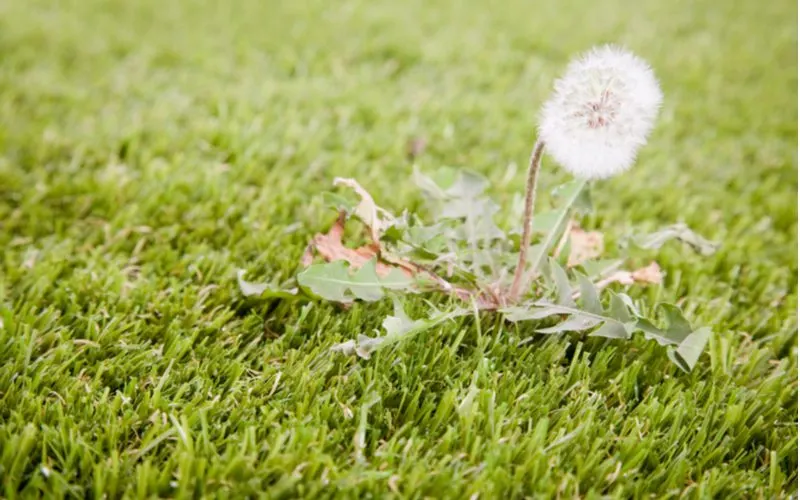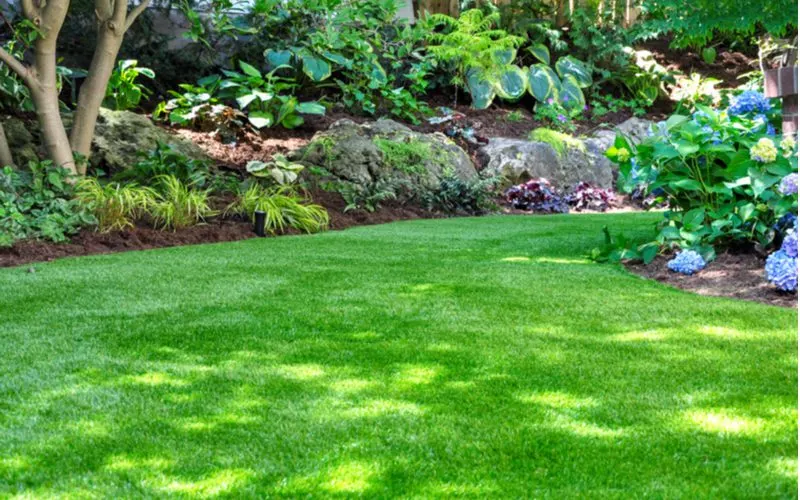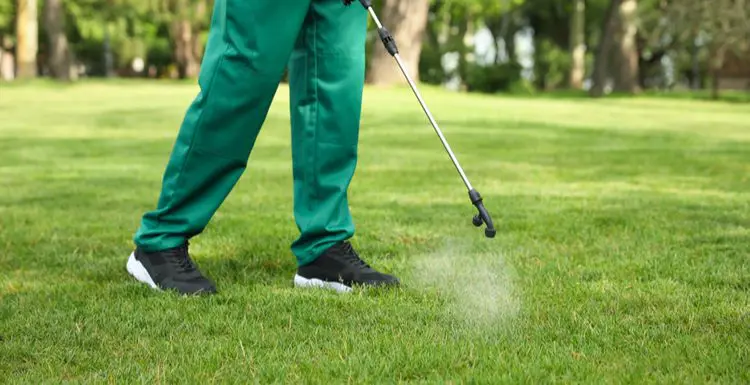Having problems controlling broadleaf weeds on your lawn?
2-4-D-based herbicides (also known by their scientific name, dichlorophenoxyacetic acid) can help.
In fact, it’s been used for all types of turf since the 1940s. But what’s the best time to apply it?
The best time to apply herbicides, including 2-4-D, is when:
- The temperature is under 90 degrees
- Wind speeds are low (under 10 mph)
- Check on the moisture levels of your yard
- Rain forecast is absent for at least 24 hours
While these are just general guidelines, there are some 2-4-D-specific requirements to consider.
Best Conditions for Optimum 2-4-D Results

Tap10/Shutterstock
Many people turn to 2-4-D for its proven effectiveness and broad range of states (liquid, concentrate, dust, or granule). 2-4-D is popular in many places, including forestry sites, turfs, and lawns.
Some farmers even use it on fruit and vegetable crops or to modify the growth of citrus plants. However, for 2-4-D to be successful, you need to know precisely when to apply it; there are four main factors to consider.
1. Ideal Temperatures
You’ll want to spray your weeds when they’re actively growing. For best results, spray them when the temperature ranges from 60 to 85 °C.
Spraying at these temperatures improves the probability of weed eradication and ensures optimum herbicide absorption since evaporation rates are significantly lower.
If temperatures exceed 85 °C, the heat may cause your 2-4-D herbicide to vaporize, losing its efficacy. In most climates, mid-to-late spring is the best time to spray since weeds are growing and temperatures are still relatively cool.
2. Wind Speed
When able, choose a windless day. As with any herbicide, it’s worthless if it doesn’t stick to your lawn. Wind speeds under 10 mph are typically considered ideal for spraying.
Conversely, if the temperatures are on the higher end of the range we listed above, try to spray on a day with a slight breeze. This helps prevent the 2-4-D from evaporating immediately after being applied.
3. Moisture Levels In the Field
When applying 2-4-D, you should be very careful of the moisture levels in your yard. When high moisture levels are present, the increased water levels reduce the concentration of the herbicide, effectively watering it down and reducing its potency.
Also, if you have too much water in your soil, the chance of runoff increases. When possible, try to spray on a day when the soil is relatively dry, but still a little moist. If your soil is so dry that it’s cracking, you’re again prone to runoff occurring.
4. Rain Conditions
2-4-D herbicides must be allowed to dry for at least one day before being exposed to rain. This drying period ensures that adequate amounts of the herbicide are absorbed by your lawn’s root system.
When possible, try to spray on a day when there’s no rain forecast for the following few days.
As we stated above, you should also be careful if it’s just raining. While a little bit of moisture in your lawn is fine, if your grass is wet, it may cause runoff. Always make sure to allow ample time for the lawn to become completely dry.
Things to Consider

NDE12019/Shutterstock
Just like any chemical, 2-4-D can be very harmful if mishandled, so keep the following in mind:
- Suit up in protective gear before handling 2-4-D
- Find a chemical-resistant apron to wear when mixing the herbicide
- Use safety glasses, chemical-resistant footwear, and high socks during mixing
- Spray the mixture at wind speeds lower than ten mph
- Not all classes of grass endure 2-4-D herbicides
- Don’t use it on flowering plants or food crops
Frequently Asked Questions

Perhaps you have already applied 2-4-D once, but it didn’t work because the conditions weren’t ideal.
To make sure the next time goes better, we’ve rounded up some of the most common questions to ensure you don’t waste any more time or money.
Will 2-4-D Work In Cold Weather?
2-4-D is so popular because of its effectiveness in all temperatures. While weeds don’t easily grow in the cold, the herbicide is still effective, even in cold weather conditions.
However, during these conditions, its effectiveness is reduced. As such, we recommend spraying during the active periods of growing plants, which typically occurs at least 60℉.
Can You Spray 2-4-D at Night?
Nighttime application of 2-4-D is typically more efficient than application at dawn, as morning dew can dilute the mix.
But a midday application is considered the best time to spray. However, your region has high wind speeds during the day, spraying at night may be your best option.
Can You Spray 2-4-D After Mowing?
You should wait 2-3 days after mowing before spraying 2-4-D. Spraying immediately after mowing may reduce the efficiency of the product, as it won’t be as easily absorbed into the leaves.
Closing Thoughts
The best time to apply 2-4-D is when the weeds are small and aggressively sprouting, usually in early spring.
Spray on windless days when temperatures are below 90 °C, ideally 48 hours after mowing.
Please remember that this is a reactive chemical, and you should be very careful when spraying it.

